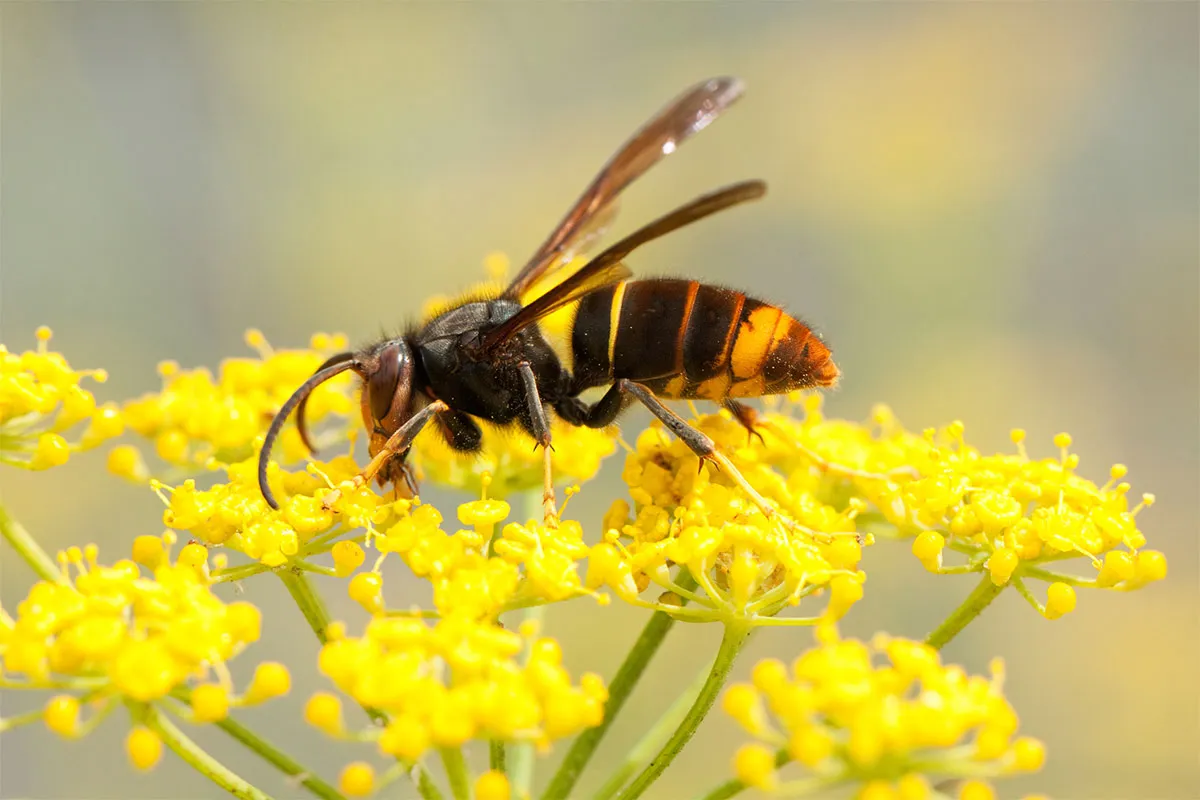The first thing it is important to make clear is that when we talk about Asian hornets we are using a ‘common name’. Common names can cause confusion. For example, when someone in the UK calls a bird a ‘robin’ they are referring to the small, crimson-breasted bird on Christmas cards, but in the USA ‘robin’ refers to a larger species of thrush. Likewise, ‘Asian hornet’ is often applied to two species of large social wasp. Only one of these species is relevant to Europe, but both hornet species are invasive.
The species we are concerned with in Europe has the scientific name Vespa velutina. The other species commonly called the Asian hornet (more correctly Asian giant hornet) is the larger Vespa mandarinia. This species is found in many parts of Asia but has recently been discovered in the Pacific Northwest of North America.
The hornet’s size (4.5cm long, 7.5cm wingspan and a 6mm sting) and fears that it may become invasive in North America have led to the media calling them ‘murder hornets’. These are impressive insects, and may become an issue in North America, but they are not the Asian hornets that concern us.
Hornets are social wasps. They live in colonies that consist of as many as a few thousand workers, each of which is the daughter of the single queen that starts the colony in the spring. The colony is housed in a paper-based nest made by the hornets from wood pulp they collect and manipulate with their jaws.
Like other social wasps, including the native European hornet Vespa crabro that is naturally found across the southern UK, Vespa velutina is a predator. Although they will hunt many insects, it is their strong tendency to specialise on honeybees that makes Vespa velutina a problem when it is found in new areas.
The Asian hornet’s natural range is Southeast Asia. However, they were accidentally introduced into France in 2004, quite possibly in boxes of pottery from China. In the hornet’s natural range, the most common species of honeybee has some great defences against the hornets. For example, any hornets that try to enter the honeybee nest will be ‘balled’ by guard bees, which surround the hornet and cause it to overheat. Honeybees in Europe, though, have poor defences.

The Asian hornet spread quickly after it was introduced. By 2015 they were found over most of France. They also spread to neighbouring countries, reaching Spain by 2010, Portugal by 2011, Italy by 2012, Belgium by 2017, and Ireland by 2021. They were discovered in mainland UK in 2016.
Although there have been a couple of confirmed sightings of asian hornets in the UK in 2021, right now, Asian hornets are not considered to be established in the UK. Beekeepers have been on high alert for over a decade and through local Asian Hornet Teams and the National Bee Unit, nests are tracked down when new sightings are made.
It is thought that the incursions originate from queen hornets that have ‘stowed away’ in caravans and vehicles travelling from Europe. The Channel is helping to keep the Asian hornet at bay in the UK, but with reports and sightings growing, it is perhaps just a matter of time before they do become established.
- This article first appeared inissue 371ofBBC Science Focus Magazine–find out how to subscribe here
Read more about insects:

